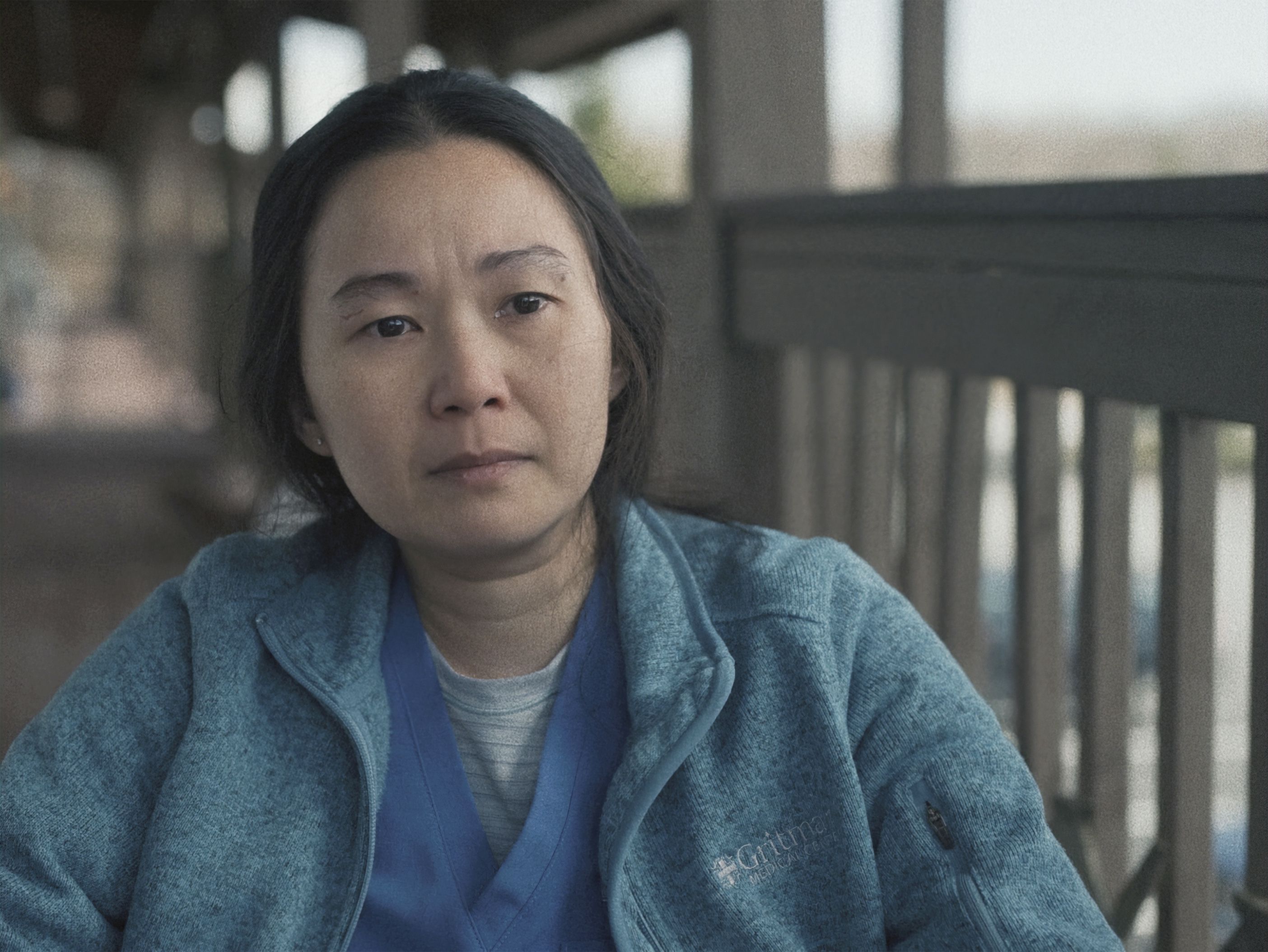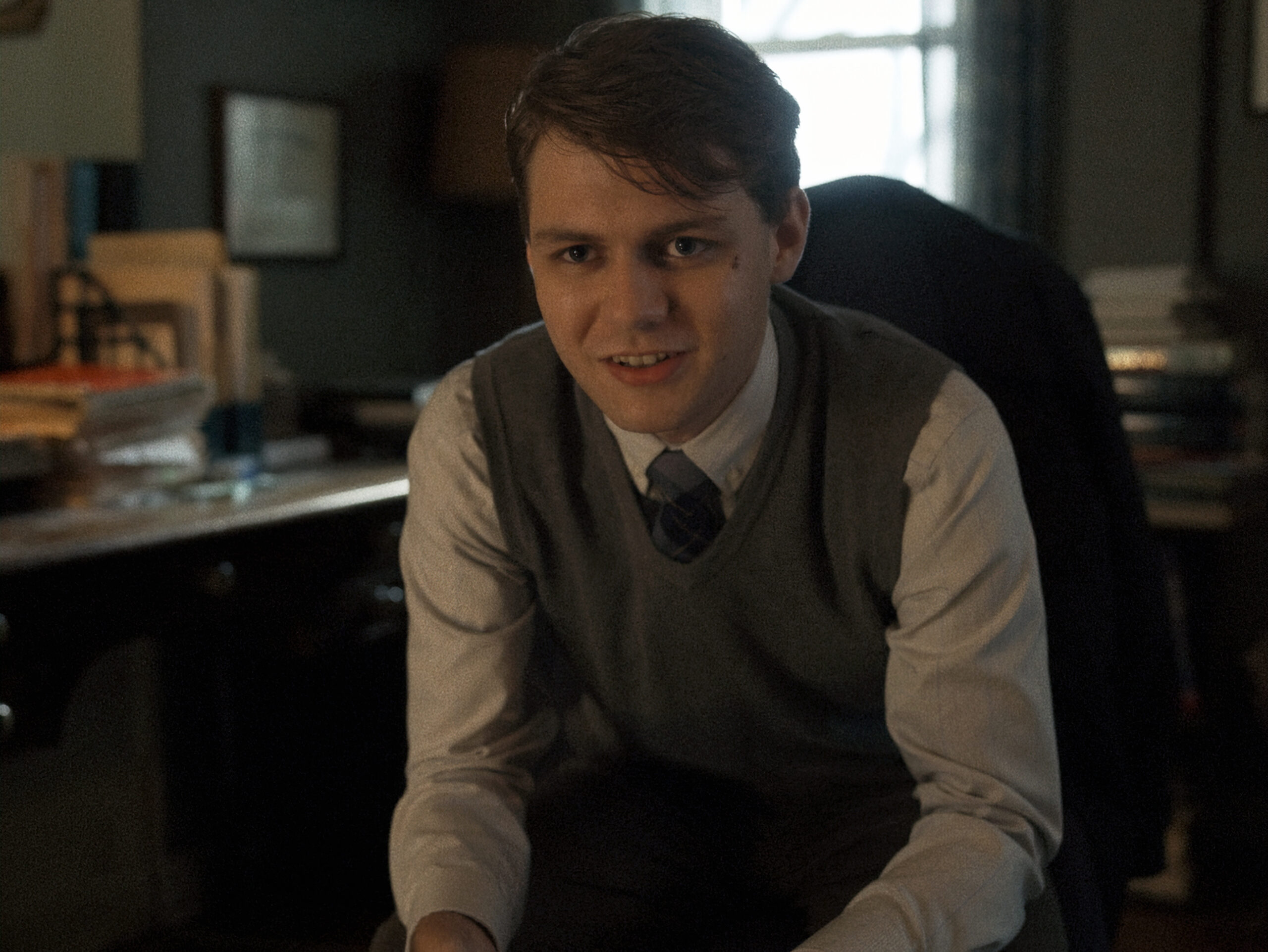Charlie (Brendan Fraser) keeps his camera off during his Zoom lectures to his online writing students, but it’s not for one of those COVID-19 reasons that have become familiar: you’re still in your pyjamas; you didn’t do your hair; you’re actually hanging the laundry instead of at your desk. His webcam is “broken” not because of a temporary imperfection of appearance, but something intrinsic to him that might undermine their confidence in their instructor or even invite cruel mockery. That’s the everyday reality for someone who weighs approximately 275 kilos, who can’t walk without assistance, and whose blood pressure has just risen to a level where the advice is: “Call the hospital.”
Director Darren Aronofsky has long been known for using confrontational tools to generate dramatic tension, whether that’s his subject matter (athletes pushing themselves to the limit in The Wrestler and Black Swan) or his filmmaking aesthetic itself (Requiem for a Dream or mother!). The Whale, an adaptation by Samuel D. Hunter of his own 2012 play, certainly continues that trend.
However, this is not a movie about a morbidly obese man. It’s about a gay man. It’s about an ex-husband and father. It’s about a lover of literature. It’s about a man who has read the Bible multiple times. In short, though morbid obesity may be the high concept hook, not to mention the technical challenge that interested both Aronofsky and Fraser, this is a movie about a person, not a body.
Aronofsky makes us confront our own preconceptions of such a person in his very first moments on screen. Charlie has a heart episode while masturbating to porn, and because he’s gay, it’s gay porn – not that this is meant to be part of our disgust with Charlie, though depending on your political persuasion, I suppose it could be. Not only are we tricked into believing what Aronofsky wants us to believe – that this is a person incapable of mastering his own indulgences – but we are also temporarily blinded to the reality that Charlie could be anything but what we see before us right now. The rest of the film is a steady reminder of the person inside this excess, life-threatening layer of insulation – a reminder that no one is born this way, and the developments that lead to such a state must be severe indeed.
In a series of characters who make their way through Charlie’s apartment, the sort of single set that sustained Hunter’s play, the first is Thomas (Ty Simpkins), a missionary from the New Life Church, whose house call coincides with Charlie’s episode. Thomas summons medical assistance in the form of Liz (Hong Chau), Charlie’s nurse, with whom he also has a personal history that reveals itself over the course of the narrative. Liz demands, clearly not for the first time, that Charlie call an ambulance. Not for the first time, Charlie declines this sound advice, citing his lack of health insurance and his unwillingness to spend his life tens of thousands of dollars in debt.
The next day, he’s visited by a teenage girl – a niece, possibly? No, Charlie was married before he came out, and the result was Ellie (Sadie Sink) – the eight-year-old he walked out on when he fell in love, who has morphed into an acerbic and frequently cruel teenager on the verge of flunking out of school. Ellie’s mother Mary (Samantha Morton) has kept her away from Charlie, and that’s been just fine by Ellie, given the acidity of her resentment toward her father. Now that Charlie knows he may be dying, he wants to make one last attempt to register in Ellie’s life – and helping her with her English papers, or possibly writing them himself, may be his best opportunity.
Setting an entire film in a single location often feels like an artificial construction designed to aid the logistics of a stage play, reminding the viewer of the origins of the subject matter at every turn. For a character like Charlie, though, this is, in fact, his entire world. He works from home, he has his food delivered, and until this particular week, he hasn’t had many visitors. In a counterintuitive touch that only the shrewd viewer will notice, Charlie’s apartment is on the second floor of a building with no lift. Rather than poor planning, it indicates how recently Charlie’s life was something other than this prison inside his body and his home.

The simple set, which has its telling details (such as the pulley system that gets Charlie out of bed), allows the focus to remain on the lifeblood of any art originating on stage: the dialogue. Over a series of scenes with some combination of the characters listed above, Aronofsky and Turner deliver a sort of radical humanism as they delve into what has brought Charlie to this point in his life. As more is revealed, which also reveals plenty about these other characters, our emotional investment becomes almost unbearable. Any of a dozen scenes might qualify as the overwhelming climax of this humanism.
Of course, none of it would register quite so much without the performance of Fraser, coming back from nearly a decade of professional inactivity. In addition to what he’s gone through prior to the start of the story, Charlie goes through a lot here – and there’s no doubt Fraser’s flinches and looks of unwitting shock when his daughter tramples him are part of why we feel for him. But in Fraser’s skilled hands, Charlie never turns into an object of our pity, feeling as though he deserves every last indignity and thereby donning an emotional flak jacket to withstand it. Not only does Fraser have the extraordinary technical challenge of plying his craft while wearing one of the largest and most seamless fat suits ever committed to film, he has the emotional challenge of dramatising Charlie without making him a sinner or saint. The astonishing achievement has justifiably made him an Oscar frontrunner.
Though any of the others here could have gotten nominations (Chau was the other one who did). Chau is heartbreaking, but particularly affecting in her one scene is Morton, who also stole one scene in the recent She Said. While this scene between Charlie and Mary is understandably contentious, it’s not contentious in the way we originally think, and it features a moment of such emotional generosity that it might prompt the first, but not the last, bout of weepiness among viewers.
As for Aronofsky, who is prone to reinventing himself each time out, his career contains an obvious corollary for The Whale, that being 2008’s The Wrestler. Both are consummately realistic films featuring a father who has pushed his body to the limit, resulting in potentially fatal heart issues, and who is desperate to reconcile with his daughter before the inevitable occurs. It’s good for us that the director was interested in going back to that well, because like The Wrestler, The Whale is one of the best movies of its year.
The Whale opens in cinemas today.


